The summer of 2016 saw us heading off to our first housesit for a month in Germany. More precisely, it was in a small community out of Wiesbaden City Centre.
We were looking forward to experiencing a small slice of German life. It didn’t take much organising; we just needed to purchase two air tickets to Frankfurt, with a quick trip on a suburban train to Wiesbaden, where Yvette met us.
Jake the Cat, the reason why we went to Germany, was waiting at home for us.
Unfortunately, Jake passed away just recently, in June 2018, after an entire life being an ex-pat cat. As he and Yvette just happened to be from America. That event prompted me to write about our housekeeping in Jake’s company while Yvette climbed a mountain. Both have travelled far and wide, though Yvette more than Jake, as he was more of a homebody and much preferred to have the company of housesitters. At the same time, Yvette went away to clock up yet another country to her evergrowing long list of places she has explored. It is with much interest that I still follow Yvette and her travels.
As a side note, interestingly, most of the people we housesit do not come from the country that they are currently residing in. We really do live in a mobile world. This is great as it allows us to meet many varied people who love travelling.
How did we find our first housesit in Germany?
Brilliant fun as we got to appreciate the history and architecture, sample local cuisine and relax around the neighbourhood with Jake.
Jake, the Cat, was a very shy feline. We had ways to improve our interaction with him, which had him seeking us out. He eventually became our constant companion when we were about in his home. As far as laps go, he much preferred to be on the Squires’ knee rather than mine.
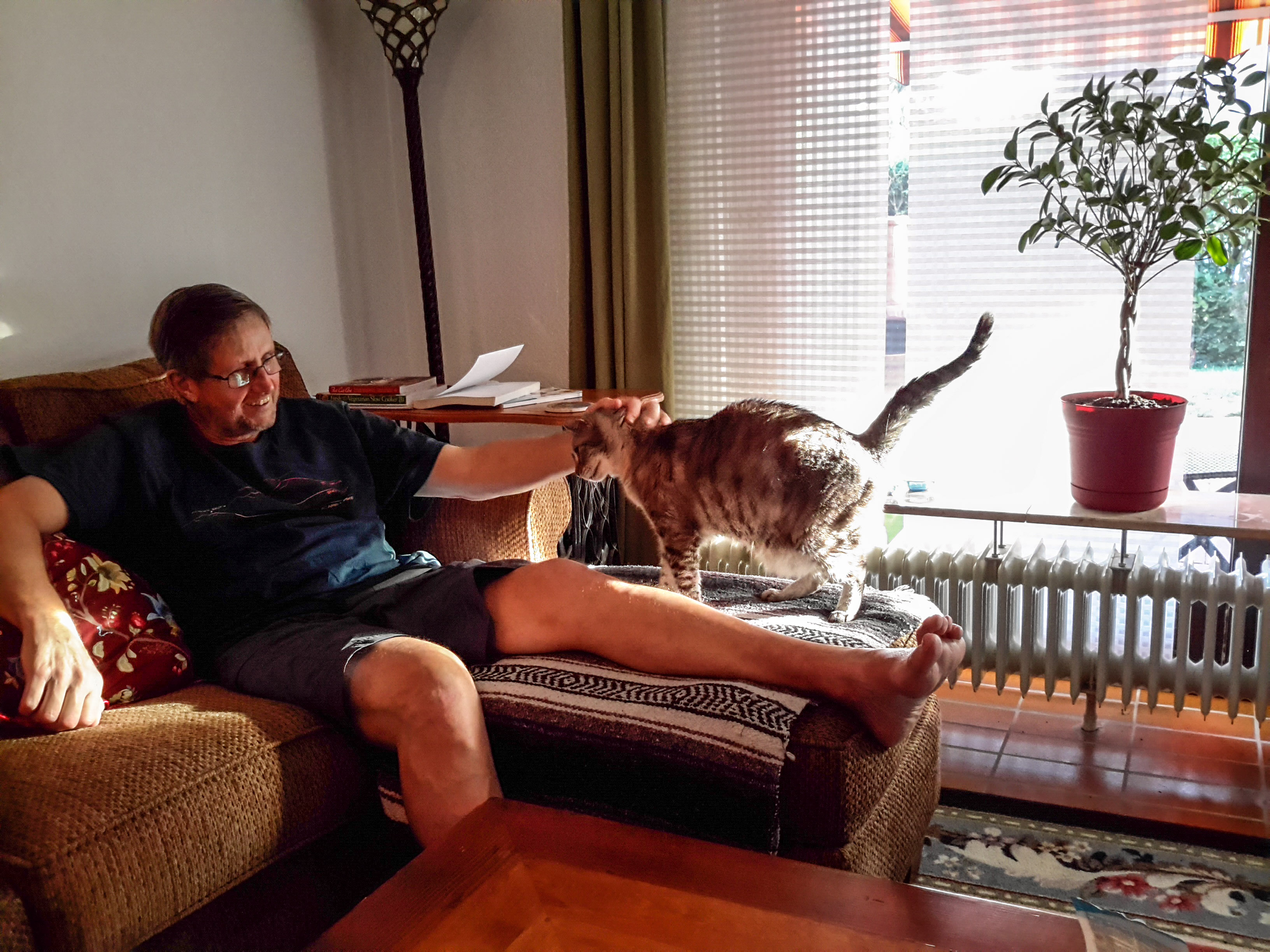
Fortunately, we could connect with Yvette and her to converse about her life in Germany and America. We also had the opportunity to chat with her German neighbour more than a few times. She showed an avid interest in what we did; in return, she was an exciting company. So we would share a few laughs over a drink as we listened and learned.
What did we explore in & around Wiesbaden?
Firstly, it was working out where to purchase a weekly bus pass, which we found at the train station in a small building where people caught the buses. A prominent place, I suppose, after spending an hour looking for it.
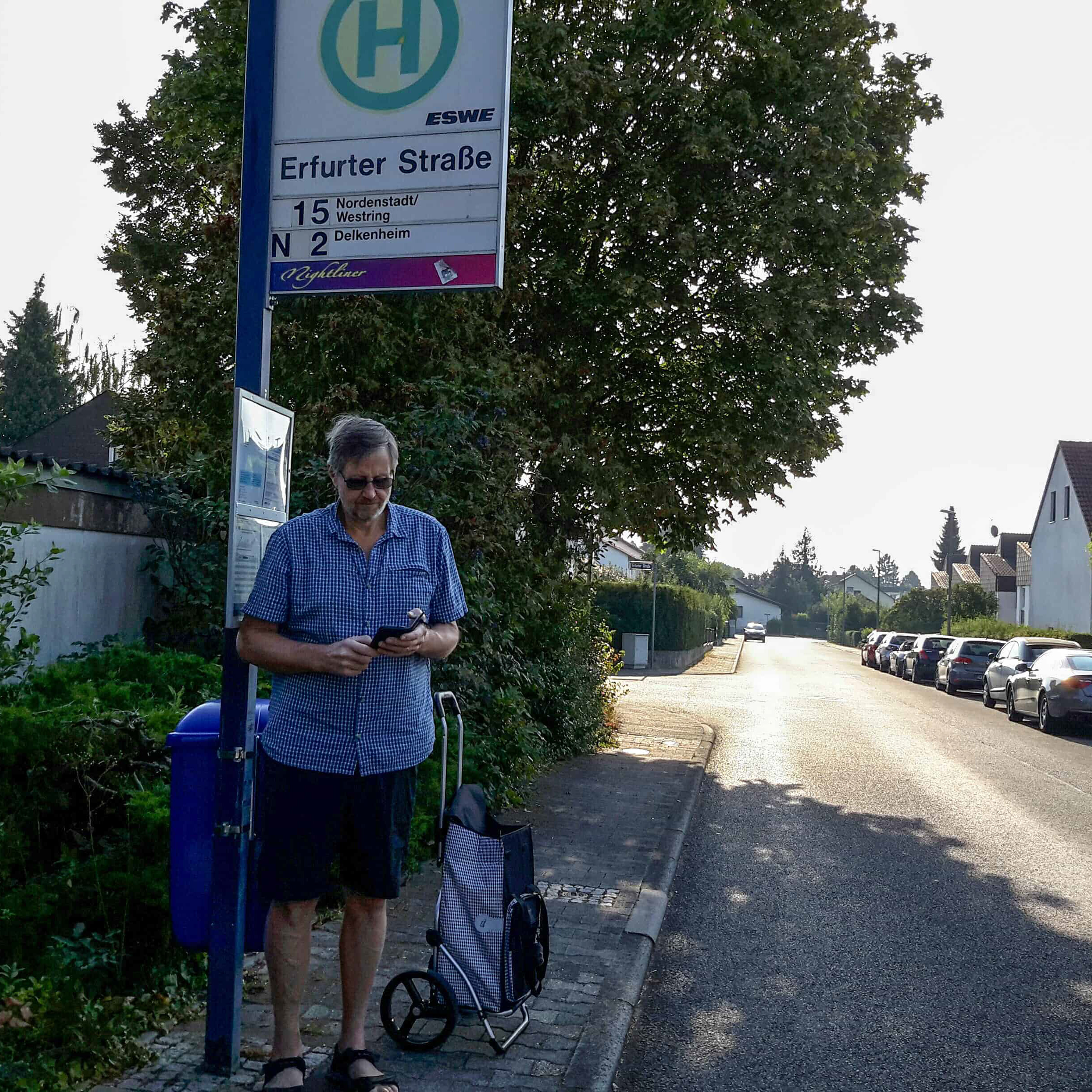
Learning the local food specialties and seeking them out to try, the fun and joy of cooking and eating came via the local markets and supermarkets. Which meant we got to visit the local farmers’ markets as well as the supermarkets that had an incredibly long aisle dedicated to just pasta, for some reason the Squire suggested he quickly go and grab something instead of me doing so!. Those moments entertained us for over an hour or two, limiting ourselves to short bursts as there was too much to see and do outside those four walls.
After acquainting ourselves with all the practical requirements, such as purchasing weekly bus tickets, supermarkets, and the markets.
Our education on the local history was to begin.
We learned more about a culture than any history book could tell us. How? Walking around the narrow lanes behind the more modern part of Wiesbaden, and coming across small brass cobbles set into the cobbled stone road.
We soon discovered that these stones were Stolperstein or Stumblestones.
They will have a person’s name, birth, and execution date. These are installed in memory of individuals who were killed by the Nazis. It was not only the Jews who were victims. Many of the stones represent people who were killed for the mere fact that they were Roma/Sinti, homosexuals, Jehovah’s Witnesses, Socialists, Communists, victims of the T-4 Program, and anyone who was seen as a threat to the Nazi regime.
It was a sobering afternoon when we kept finding them as we walked. In such a small area, so many people were affected by the actions of the Nazis. I loved the concept of these stones as it was a strong message for all who walked those streets. More importantly, people who died at the hands of Nazis are remembered in a very public way. We ventured in silence over to the Museum for more of an insight into yet another war we, the human race, don’t seem capable of learning from generations after these events.
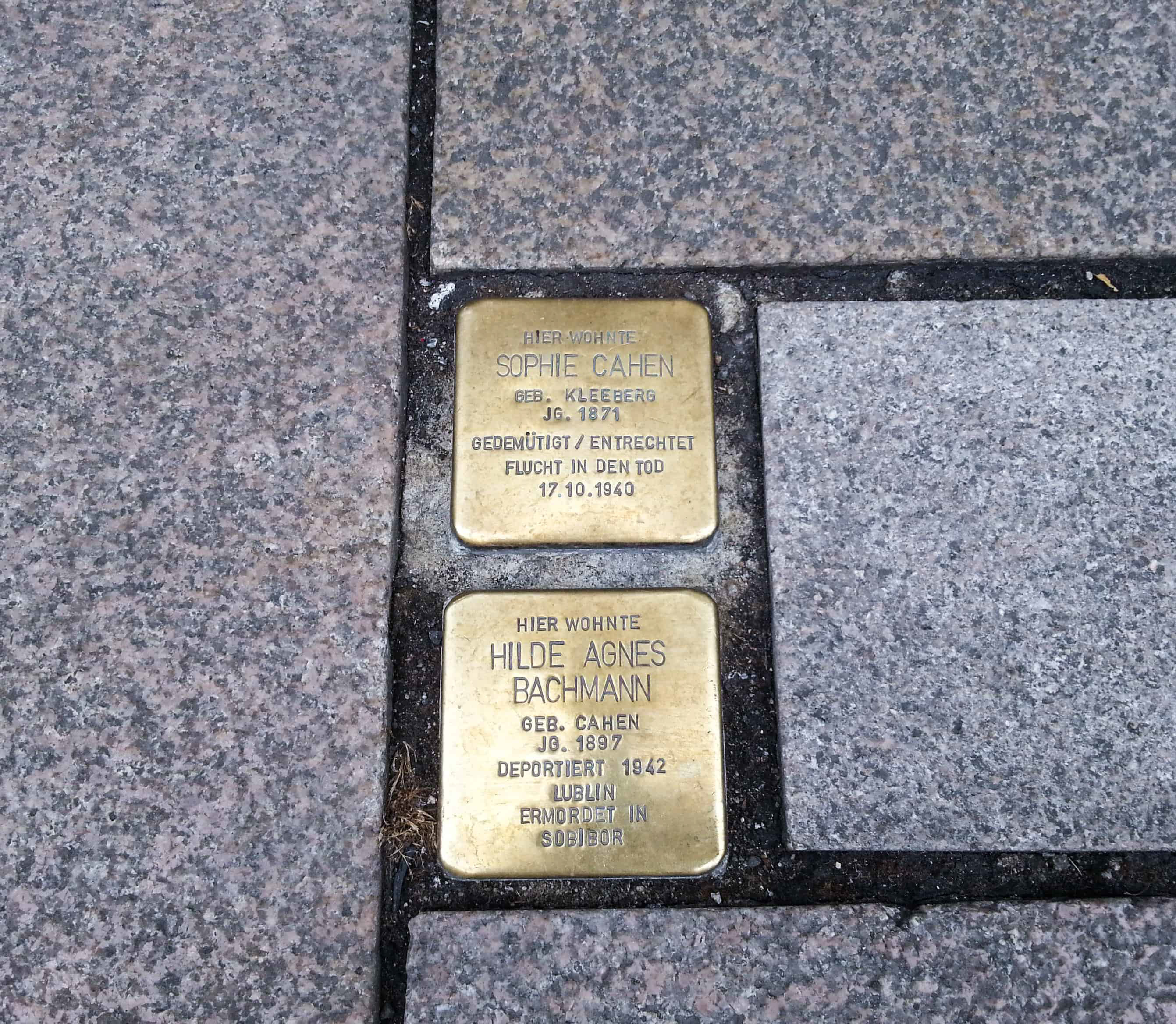
Over 67,000 stones have been installed in Germany and 21 other lands. These stones are found in Wiesbaden, Austria, the Netherlands, Hungary, Poland, France, Belgium, and many other European countries.
These will be in front of the homes or workplaces where people last lived/worked freely. Different groups or organisations pay for the installation. If any family members are alive, they are invited to be there when the stones are placed into the walkway.
What got to us the most was when we found a group of these stumble stones together and realised that an entire family had been deported and killed.
As I previously wrote, we learned so much more by walking those narrow cobblestoned streets, with the added stories and photographs of local people that were part of a museum exhibition than any history book could teach us.
The Highlights of Other Places We Visited
Frankfurt
The Light show was one of the major highlights, as well as admiring the historical architecture and visiting a Palace.
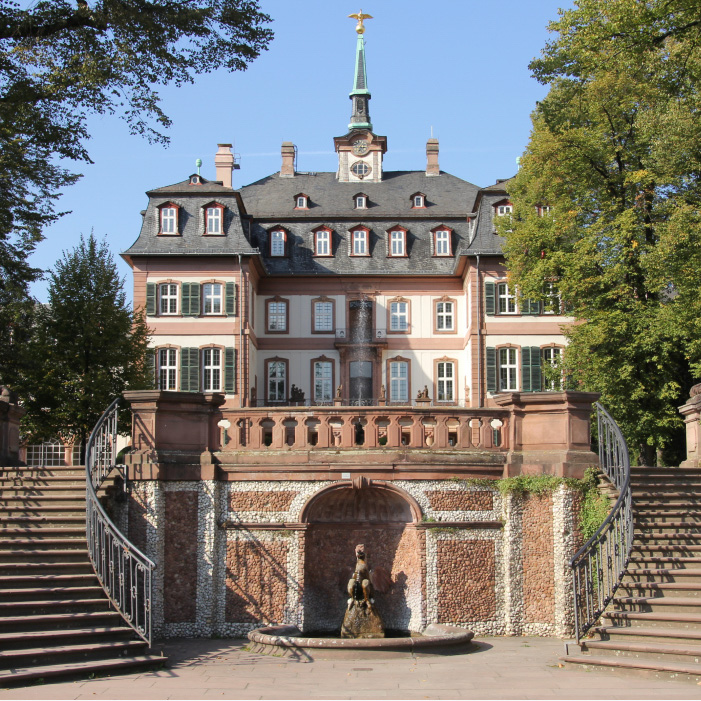
Bolongaropalast, Frankfurt, to visit this majestic palace. You could use moovitapp.com, which lets you know which train to catch. Though I would check closer to the time of using it, with most transportation in Europe, time changes and delays are frequent.

The spectacular light show!
Mainz
We visited Mainz on a few occasions as there was much to see and do, like churches and museums. It is generally an exciting place to stroll and admire the architecture when you are a new arrival to Germany.
Over the years, we have seen and explored many churches, as you do when travelling around Europe for an extended period.
St Peter’s church in Mainz has stood out in my memory bank. This impressive Baroque design was created by Johann Valentin Thoman and built in 1749-1756. The building did need to be rebuilt in the 1950s after suffering extensive damage in WW2. It is still worth visiting even without being entirely like the original one.
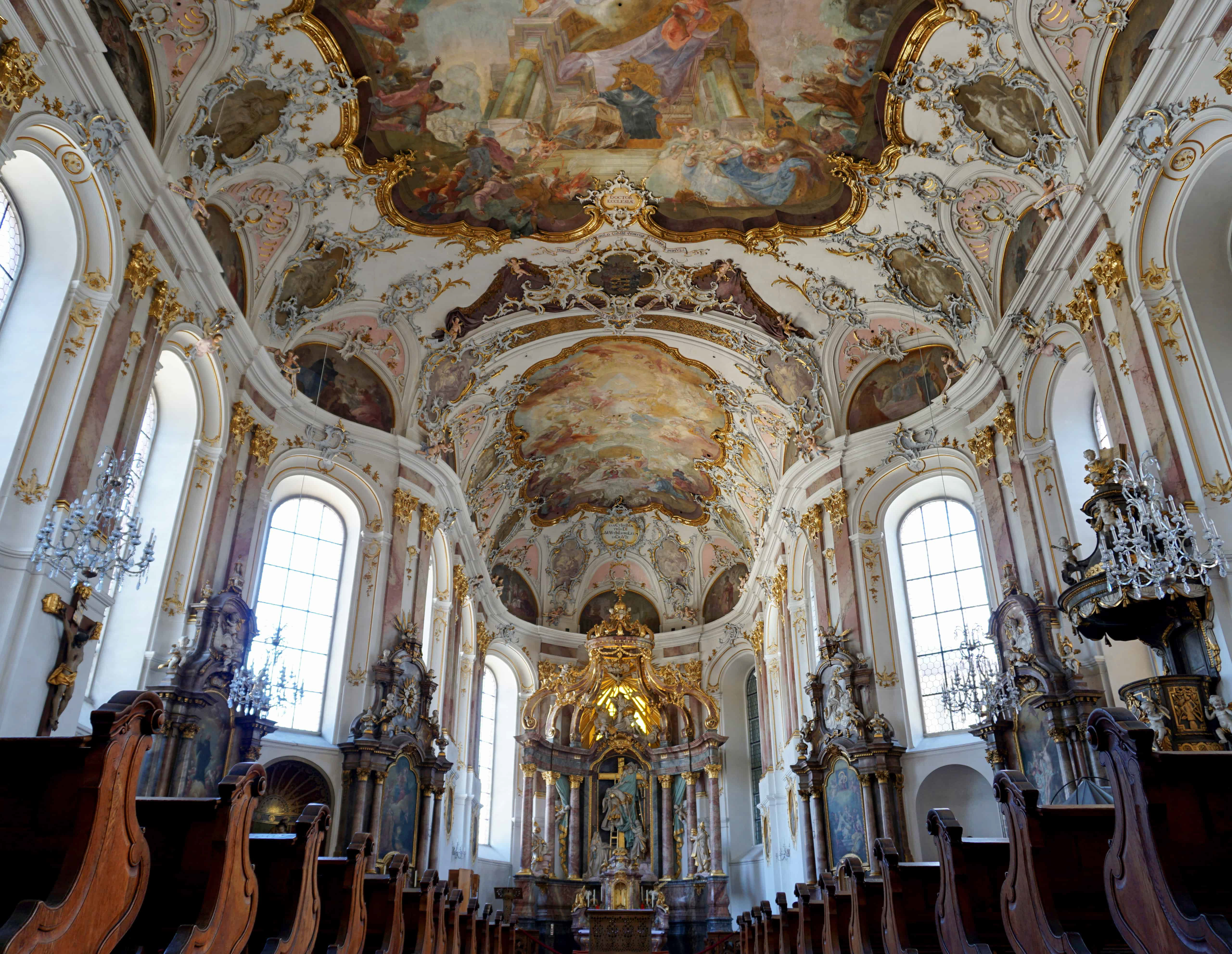
St. Peter’s Church is located beneath Deutschhaus Mainz in the northwest of the historical centre of Mainz, Germany. It is one of the most important rococo buildings in Mainz. Originally, it was a collegiate church monastery of ″St. Peter before the walls″, which had existed since the 10th century and is dedicated to the apostle Peter as patron. Today, it serves as a parish church for the parish of St. Peter / St. Emmeran.
Mainz Cathedral
St Peter’s was spectacular, as was the distinctively German Cathedral in Mainz.
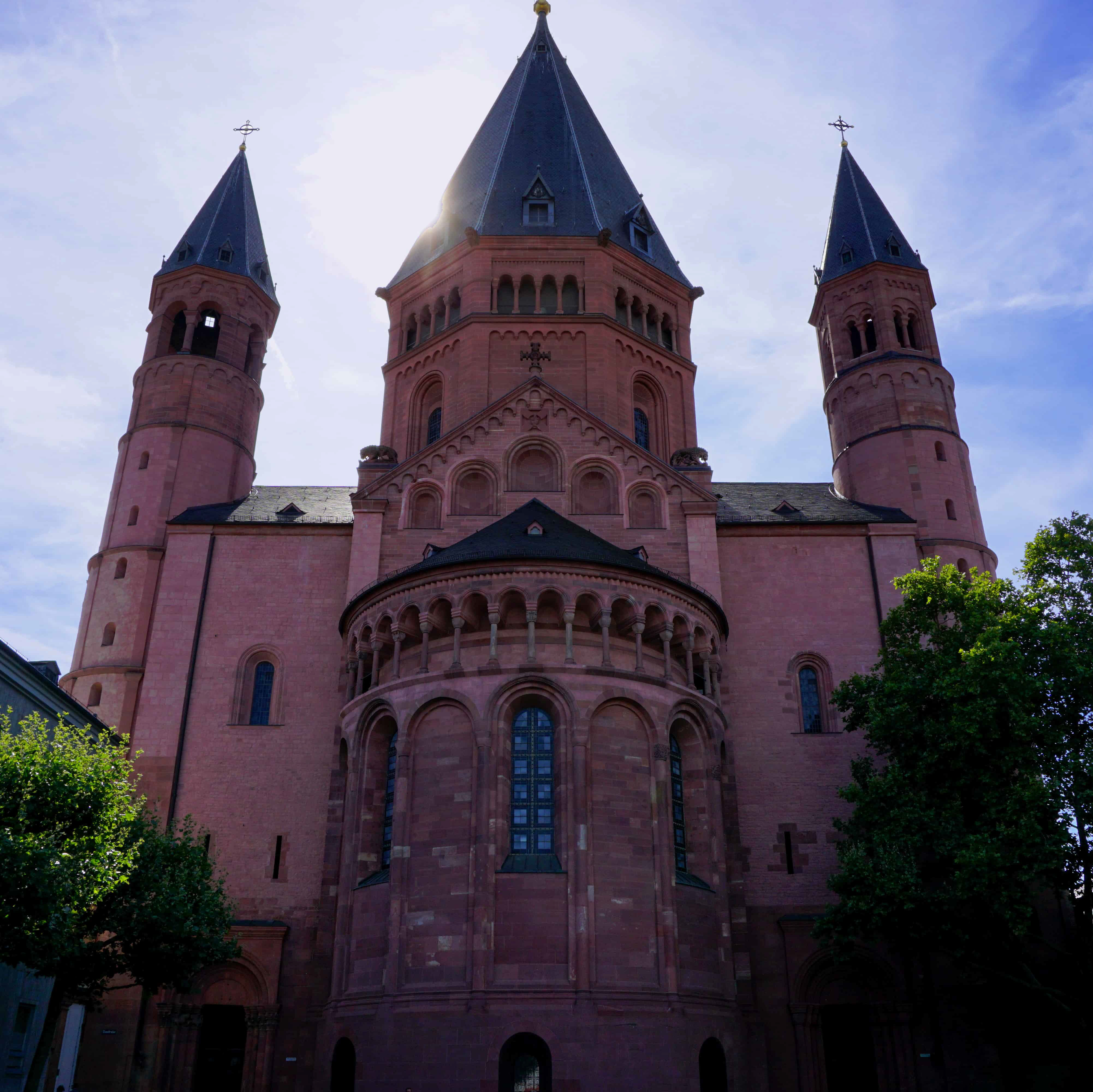
The Cathedral of Mainz dates from 975 AD but was continually rebuilt and restored, reaching its present form mainly in the 13th and 14th centuries.
At Mainz Cathedral on March 27, 1188, Holy Roman Emperor Frederick I (Frederick Barbarossa) took up the Cross in the Third Crusade called by Pope Gregory VIII.
During World War II, the Allied bombing of Mainz destroyed 80% of the city, but the cathedral was left almost entirely unharmed.
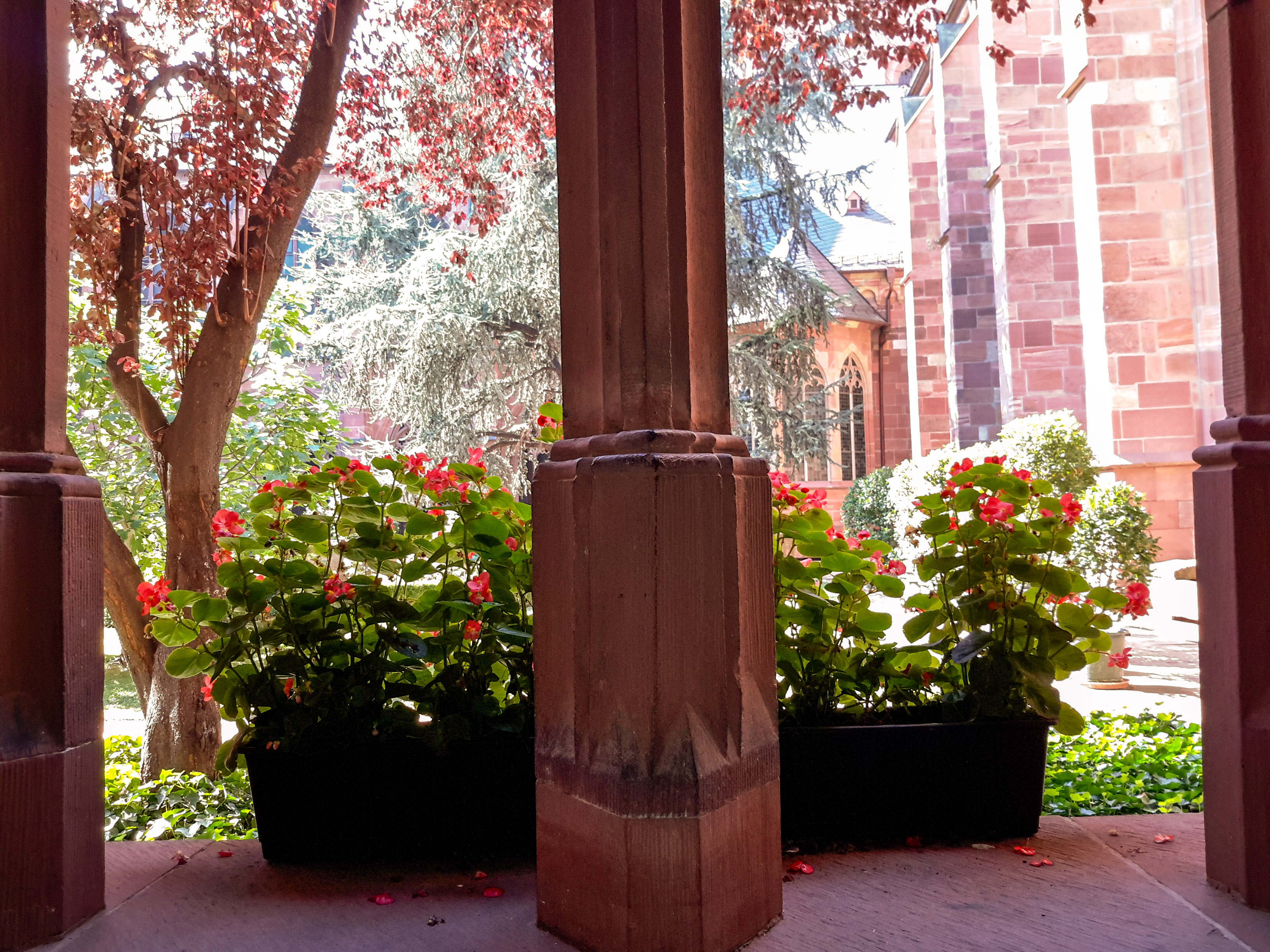
Not only did churches and cathedrals entertain us, but we also had the opportunity to view a few classic cars on a warm Sunday afternoon. Finishing off that afternoon with a cool one, as you do in a country renowned for its wheat beers, Hefeweizen.
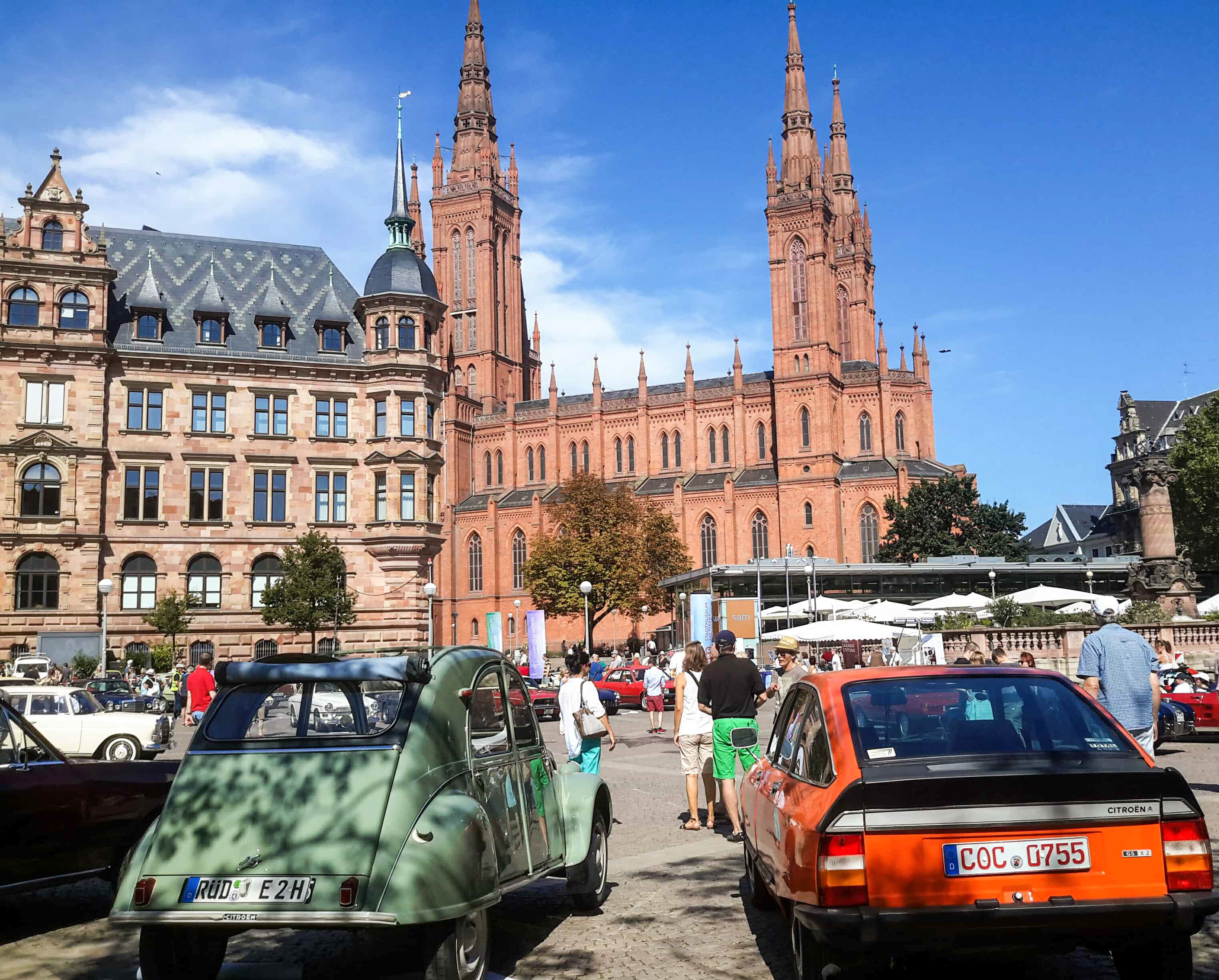

As you say, there are many of those little plaques set into the pavements in Amsterdam. I always find them incredibly moving, and I really appreciate the fact that ‘ordinary’ people get a mention for once in the annals of history.
LikeLiked by 1 person
Totally agree!
LikeLike
Love finding g little gems in places. Those placques were definitely a gem!
LikeLiked by 1 person
They are!! I love how the ordinary person that was affected by the horrendous actions of war are acknowledged.
LikeLike
Definitely. They each have their own story to tell xx
LikeLiked by 1 person
Stunning interior in St Peter’s in Mainz!
Notice you have the trusty shopping trolley – they’re brilliant.
LikeLiked by 1 person
They are!!
LikeLiked by 1 person
Those plaques are such a lovely way to remember those who had their lives taken from them for meaningless reasons. Your photos of The various buildings are stunning 😊
LikeLiked by 1 person
Thanks, Sam, yes for no good reason!! I applaud them for stating that when a person committed suicide that it was indeed murder by those that were going to capture them
LikeLike
I love the stone idea. I love it. I can’t say that enough. I’m a big fan of WWII fiction because the stories are heartbreaking, but the victims rise against their oppressors and win over time. When I think about what the Nazis were attempting it makes me sick to my stomach. Thank you for sharing the story about the stones. We have to remember that not all Germans were Nazis and some of them were victims, too.
LikeLiked by 1 person
Yes, I agree Lisa not all citizens have the same political stance, and definitely not all Germans were Nazis. No one really wanted to believe that another human being could be so zealous in their beliefs and hatred. Unfortunately we humans are really slow at not learning from history. Maybe one day future generations will learn to develop more tolerance towards those with different political and religious beliefs.
LikeLiked by 1 person
We can always hope, Suzanne!
LikeLiked by 1 person
Looks an interesting place to stay. I have seen the Stolperstein elsewhere it didn’t realise they were so widespread.
LikeLiked by 1 person
It was new to me too Anabel, until I researched them when we did find them in Wiesbaden.
LikeLiked by 1 person
Thank you for pointing out the plaques (I have ‘stumbled on’ them in France and in Amsterdam) and that those who were rounded up and executed were not all Jewish. It is a difficult line to tread when one has that conversation because in no way am I trying to dilute the extremity of the suffering of Jews at the hands of the Nazis but as you rightly point out there were many other groups that were also hounded and exterminated. I am shamefully poorly travelled in Germany (Berlin, Bonn, Bavarian Alps, Munich, Cologne) and I found this article fascinating and full of the lure of a place that when we are back in Europe we intend to tour rather more thoroughly. Thank you Suzanne, as ever this was excellent.
LikeLiked by 1 person
Osyth, pleased that you enjoyed the post. You are hardly deficient in travelling Germany!
I feel there are still so many stories to be still told regarding the stumbling stones. Hopefully we have a chance to see more of Germany. We did visit a few other places during 2015, pre blogging 😊
LikeLike
Jake looks like such a sweetie. The squire has magic knees to entice such a shy kitty.
Those plaques are such a good idea. Understated, but really moving. It must have taken years to research and install so many!!
LikeLiked by 1 person
I call him the cat whisperer 😀 Yes, it would’ve taken them years to do the research of who perished during that period.
LikeLiked by 1 person
Those Stumblestones are such a simple but powerful way to acknowledge the horror and tragedy of the Nazi era. I wish I could say that we’ve all learned from that terrible time and history will never be repeated but, it’s obvious that that’s not the case. Germany is a beautiful country and I appreciate how it has done its best to confront its history.
LikeLiked by 1 person
I think a few groups have undertaken to acknowledge the people who died more so than the country as a whole. That’s my perception of the situation.
LikeLiked by 1 person
Interesting. I remember my one and only trip to Germany… I was fairly young and traveling with a girlfriend. When we mentioned to two older men that we wanted to visit Dachau, they looked very offended and asked “Why would you want to go there? It’s all in the past.”
LikeLiked by 1 person
Annoyed that he was once again reminded of his country’s past he would rather forget? Unfortunately many tourists don’t treat those very emotive places with respect. In more recent times where there was a mass shooting or other tragedy would we not say to people why do you want to visit such and such a place? I for one have no interest in seeing where the death camps were situated. Though others like yourself may see it as a part of history to reflect on and learn from?
LikeLike
Interesting analogy but I don’t see those as being the same. We felt that it was important to confront and reflect, especially as my father fought in the war and I have friends whose families were directly impacted. But I can see why some people might think (and in some instances it might be true) that certain visitors just want to take a few selfies and be gone. The two Holocaust museums I’ve visited were very well done and quite powerful.
LikeLiked by 1 person
Oh yes, I understood your reasons for going Janis. I was just turning it around to try and guess what that man was thinking. That’s why I love the idea of the stumbling stones as people can still confront and reflect on what happened in that part of the war, exactly where people lived before deportation.
LikeLiked by 1 person